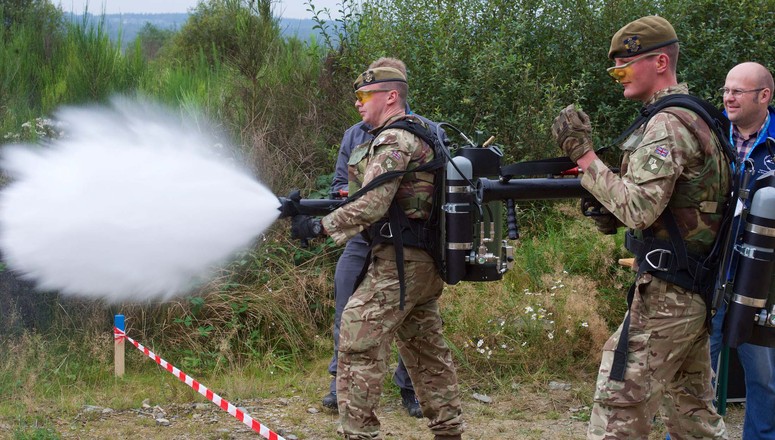
Running from 19th to 30th September, a recent NATO sponsored exercise has examined the use and effectiveness of non-lethal weapons in land operations.
New and complex security situations arising from fighters operating amongst civilians require new responsive technologies and NATO challenged member and partner countries to help provide solutions.
The NNTEX-16L exercise was hosted in Belgium at the Elsenborn military camp, where troops from four participating Allies — Belgium, the Netherlands, the United Kingdom and the United States — as well as troops from partner country Austria and additional assessment teams from Denmark, Germany and Norway practised, tested and assessed military utility of non-lethal weapons in land operations and their added value within different scenarios.
Non-lethal weapons (NLW) include devices such as lasers, acoustic and kinetic instruments. The weapons can be used as a tool to minimise the loss of life while achieving mission success and ensuring protection, stopping suspects without killing them and keeping civilians safe.
“Non-lethal capabilities are critical for force protection purposes and to give commanders a range of different options to bring potentially hostile situations rapidly under control, while avoiding escalation and the disproportionate use of force,” explained Dr Jamie Shea, NATO Deputy Assistant Secretary General for Emerging Security Challenges.
The NATO Alliance is supporting various activities in the field of non-lethal weapons, within the overall framework of NATO’s Defence Against Terrorism Programme of Work (DAT POW).
NNTEX-16L has focused on high technological capabilities, covering a wide variety of systems such as non-lethal directed energy capabilities, including radio-frequency vehicle stopping and counter-personnel technologies. The exercise highlighted the concrete value of non-lethal capabilities at a hasty vehicle checkpoint and in a perimeter security scenario.
“Exercises such as NNTEX-16L demonstrate that non-lethal weapons are today technically mature enough to give the warfighter more options in the escalation of force process,” said Maj Dr Alexandre Papy, Belgian representative to the DAT POW Non-Lethal Capability Working Group. “We now need more opportunities to demonstrate their use in other types of missions to convince the senior leadership to integrate them on the field.”
Both maritime and land events are being covered in the NNTEX series which are the culmination of several years of the DAT POW Non-Lethal Capabilities (NLC) initiative. DAT POW, NATO member and partner countries develop advanced technologies and counter-measures which meet the most urgent security needs in the face of terrorism. The programme addresses Allies’ and partners’ urgent requirements by providing NATO common funding — member countries pooled resources within a NATO framework — in support of capability development.
The NLC initiative provides a platform for developing pioneering projects and focuses on the assessment of effectiveness and operator safety, contributing to the overall aim of making nations aware of the full potential of non-lethal weapons.
If you would like to join our community and read more articles like this then please click here
acoustic Austria Belgium European & International Germany kinetic lasers NATO NATO’s Defence Against Terrorism Programme of Work Netherlands NNTEX-16 non-lethal Norway technology UK US








